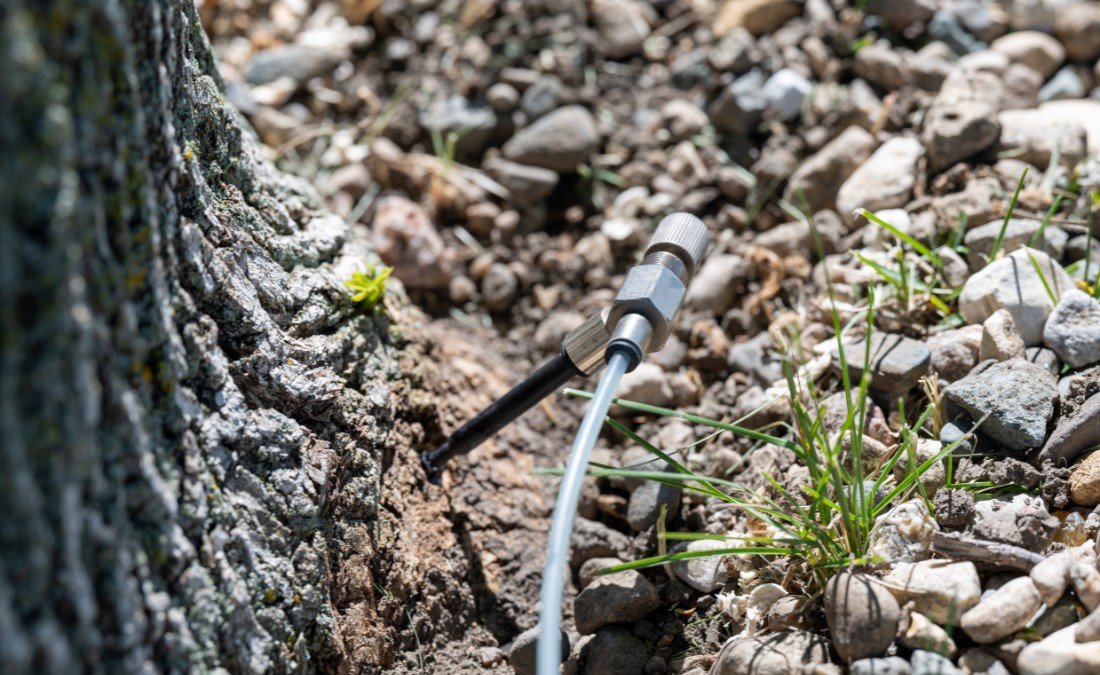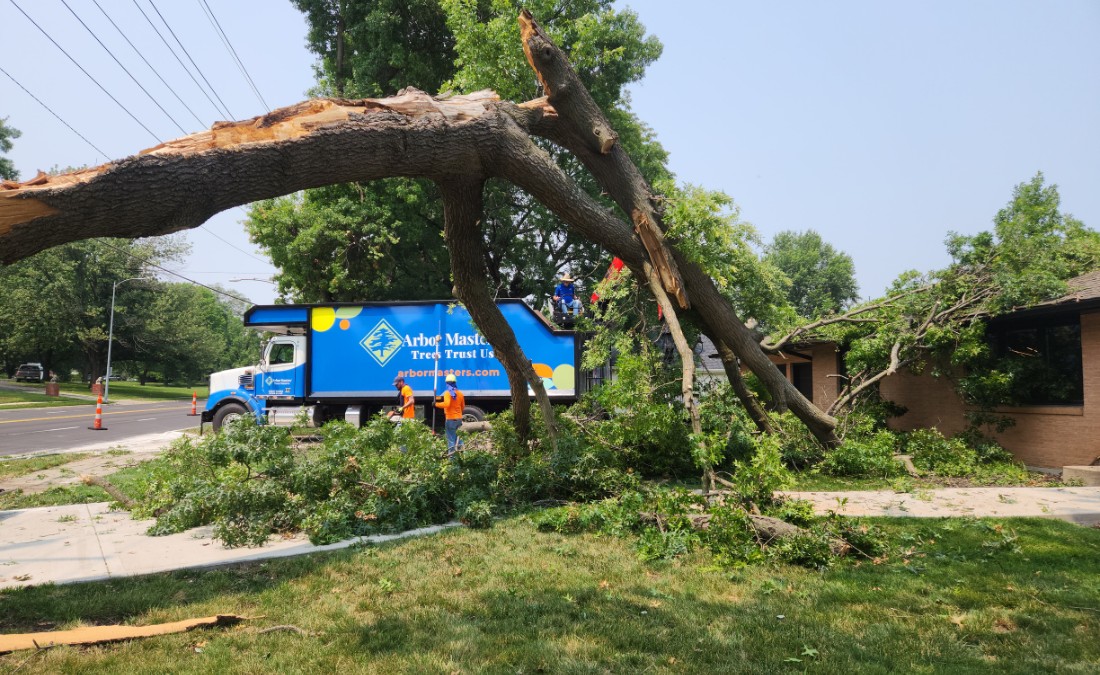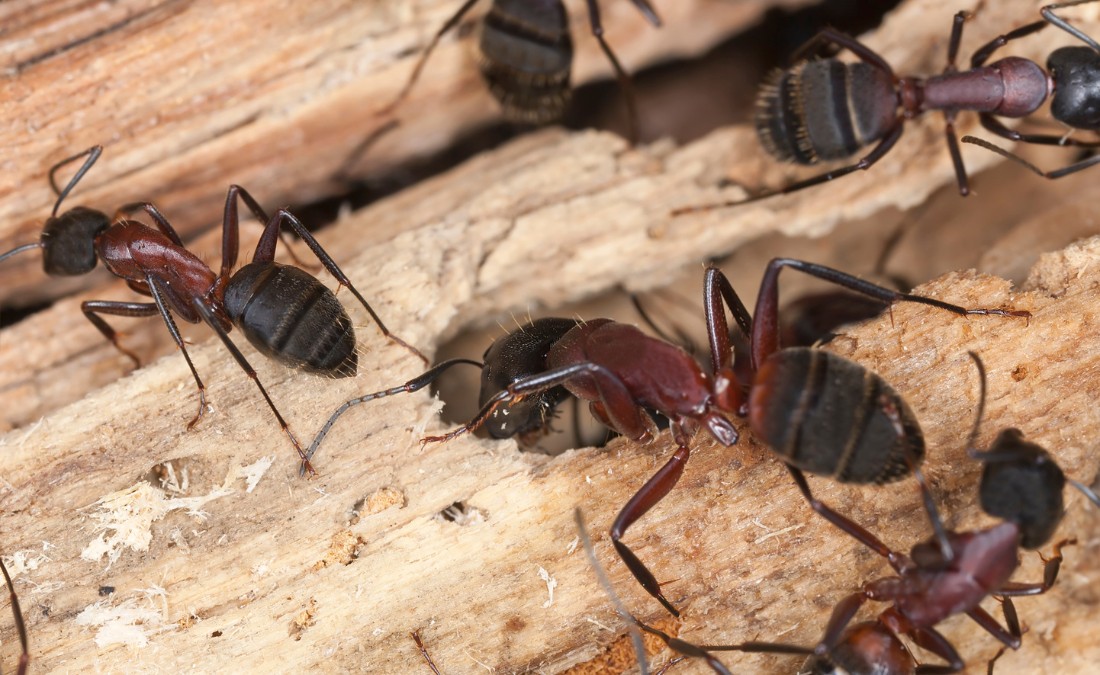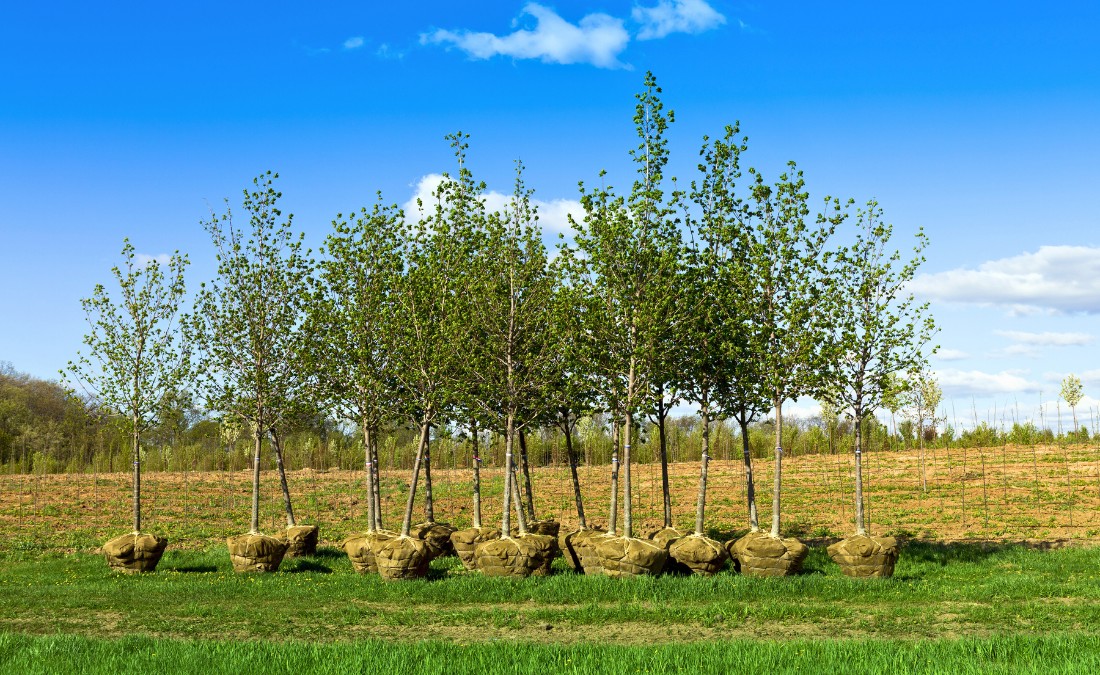Wood-Boring Beetles: Identifying and Controlling These Destructive Pests

Is your tree infested with wood-boring beetles? Learn to spot the signs and symptoms of infestation by beetles and destructive moth larvae so you can get professional treatment before permanent damage occurs.
Boring beetles and other insects can be a destructive pest for your trees. Often going unnoticed, these insects feed on the vascular tissue of trees, blocking areas from receiving essential nutrients. Because these pests are so common in the central United States and can cause death in trees, it’s important to understand the different types of boring insects, what they do to your trees and how to manage them.

What are Wood-Boring Beetles and What Do They Do?
Although we may hear about beetles being the most wood-damaging pests, it’s their larvae that feed on the vascular tissue beneath the bark, causing the damage. Other insect larvae, including a few moths, also eat the vascular tissue.

About Wood-Boring Beetles
Wood-boring beetles bore holes into tree bark and deposit their eggs. The hatched larvae feed on vascular tissue, cutting off nutrient and moisture supplies from being transmitted between foliage and roots.
The most commonly known wood-boring beetle is the emerald ash borer, a common pest all across the eastern and central United States. Other common boring beetles include:
- Asian longhorn beetles: Asian longhorn beetles feed on mostly hardwood trees. They were first found in the United States in 1996.
- Bark beetles: Bark beetles are a large and diverse group of beetles that include the fruit bark beetle and spruce wood engraver beetle.
- Red-headed ash borer: Red-headed ash borers target a wide variety of hardwoods but tend to attack varieties of ash, oak and hickory trees the hardest.
- Cottonwood borer: Characterized by their geometric yellow, white and black coloring, the cottonwood borer commonly infests cottonwood, poplar and willow trees.
- Locust borer: Adult locust borer beetles are about 3/4 inch long. They have a black body with bright yellow stripes and long antennae.
- European elm bark beetle: The European elm bark beetle is dark reddish brown and shiny. These beetles grow to be about 1/8 inch long. They carry and spread the fungi that cause Dutch elm disease.
- Bronze birch borer: Adult bronze birch borer beetles are about 1/2 inch long with bronze-colored coating on their backs. These beetles affect white, paper, and yellow birch trees.
Moth Larvae That Bore into Trees
Beetles aren’t the only insects that bore into a tree’s vascular tissue. Several species of moth larvae cause significant tree damage as well.
The moth eggs hatch either in the late fall or early spring. Depending on the species, the larvae will feed beneath the bark before transitioning to their next growth stage. For some species, like the Zimmerman pine moth, this feeding produces oozing resin. This resin contains the excrement of the larvae and resembles yellow/gray dripping candle wax.
Another example of moth larvae that eat vascular tissue is the carpenter worm moth, a large, brown-colored moth found throughout the central United States, including Texas, Oklahoma, Kansas, Missouri, and Iowa. The peach tree borer moth is another small, clearwing moth. The larvae bore into the trunks of peach trees and other fruit trees.
What both wood-boring beetles and moths have in common is their potential to cause significant damage to your trees over time. By feeding under the bark, a boring insect infestation can easily go unnoticed, leading to persistent damage over an extended time. Left unchecked, this can cause irreversible damage to trees.
For some pests, like the emerald ash borer and the Zimmerman pine moth, it’s not a matter of if; it’s a matter of when your trees will be impacted. If your trees show signs of borer infestation, contact your local arborist to learn more about treatment plans.
Borers’ Favorite Trees
Boring insects, both wood-boring beetles and moth larvae, feast on many different tree species. Some borers – like the emerald ash borer – are host-specific, but some feed across species, such as the red-headed ash borer, which feeds on ash, oak, elm, and others.
In the central United States, we have a diverse population of trees that borers make their homes in. Here are a few tree families and their most common boring pests:
- Ash: emerald ash borer, red headed ash borer
- Birch: bronze birch borer, Asian longhorned beetle
- Cottonwood: cottonwood borer
- Elm: red-headed ash borer, European elm bark beetle, Asian longhorned beetle
- Fruit trees: peach tree borer
- Honey locust: locust borer
- Maple: red-headed ash borer, Asian longhorned beetle
- Oak: red headed ash borer, red oak borer
- Pine: Zimmerman pine moth
- Willow: Asian longhorned beetle
How Do You Get Rid of Boring Beetles?
Wood boring beetles and other pests can cause significant damage to your trees. It is important to know how to identify these pests, understand the best control methods, and practice preventative measures to avoid infestation.
Inspection and Identification for Symptoms of Wood-Boring Beetle Infestation
Borer beetle infestations often go unnoticed because the signs are hard to spot. Characterized by exit holes, bore dust – also known as frass – and the beetles themselves, it is important to know the symptoms of a borer infestation in your trees so you can inspect your trees and take action as soon as possible.
- Fresh exit holes – Borers leave behind round, oval or D-shaped exit holes as they emerge from the wood. The holes will have sharp edges when clean and fresh.
- Frass – As the beetles bore out of the wood, they will produce sawdust known as frass. The frass will often pile into a perfect cylinder as it is pushed out of the tree. You may notice piles of frass on the ground surrounding your tree.
- Sap-like oozing – Your tree may ooze a resin substance from the exit holes as the seasons change from summer to fall. This is not to be confused with similar symptoms of damage from sapsuckers.
- Galleries – As larvae feed on the tree, they create galleries or small tunnels under the bark. These are unlikely to be visible until the infestation is in advanced stages.
- Crown dieback – Your tree may appear to be dying at the top center of the foliage, and this is known as crown and branch dieback. Compensation for the dieback can occur lower in the tree, referred to as suckers, shoots, or water sprouts. Large limbs may die due to weakened tissue on branches.
If you think your trees have an infestation, contact us today to get a professional arborist’s assessment and start a custom treatment plan.
Treatment Methods for Boring Insects
At Arbor Masters, we follow the industry’s best management practices by targeting boring insects in their most active season to maximize impact. Our equipment and methods keep the ingredients as contained as possible.
- Trunk injections: We inject the trunk of the infested tree in the tissue beneath the bark with a specialized insecticide. This treatment can last up to two years. The treatment is minimally invasive with only the 3/8” portals around the trunk base remaining temporarily visible after the injection. The tree produces wound tissue that seals over the injection sites with a few years.
- Soil injections: Our trained technicians probe the soil with a 1/2“-wide injection tool. We apply the active ingredient 5” beneath the soil surface to be most available to roots for uptake into the tree’s cambium, the actively growing cell layers in the tree’s trunk, for the season. This treatment is most effective when applied annually and spaced 12” apart around the base of the tree.
- Bark spray: Applied on the external tree bark from the soil surface up to 5’ high, the spray is absorbed into the tree’s cambium layer and transferred from the roots underground to the twigs in the canopy.
- Trunk Injections
- Soil Injections
- Bark Spray
Our borer treatment methods are tidy and discreet, so much so that you may not know we’ve completed our treatment unless you watch our trained technicians do it. We minimize the impact on your landscape with these applications, and our technicians work carefully to minimize wounds to your trees. Our treatment methods and ingredients were selected to minimize the risk to beneficial insects and have the most impact on targeted pests.
Prevention Strategies: Stopping Borers from Attacking Your Trees
The good news is that prevention is possible. Here are a few of our tips for limiting your trees’ chance of borer infestation:
- Pick your trees carefully: Some tree and shrub species are less prone to wood borer infestations than others. Contact your local nursery to learn about pest-resistant cultivars of your favorite trees and shrubs.
- Proper planting: Prepare your planting site to avoid unfavorable growing conditions.
- Fertilization: Proper fertilization and watering help trees minimize daily stress and fight pests and diseases over time.
- Pruning: Effective pruning and thinning during dormant periods and prompt pruning of wounded or broken branches will help keep your trees growing strong.
These prevention strategies promote health for all trees in all seasons, aiming to reduce stress. Stressed trees are always more vulnerable to pests and diseases than trees with adequate moisture and healthy soil. At Arbor Masters, we offer year-round plant health care services to keep your tree happy and healthy.
Not all insects are harmful to your trees. Trees are hosts to countless beneficial insects, like lady beetles and lacewings. Some insects are a critical food source for birds and other wildlife we often take for granted. Knowing your trees’ species, what insects tend to feed on them, and whether they are destructive to tree health will aid in keeping destructive pests to a minimum.
What’s Next?
Boring beetles and moths can cause significant damage to your trees. By understanding how the pests feed on your trees, knowing how to identify an infestation, and working with your local arborist to manage or minimize an infestation, you can keep your trees safe and healthy.
If your trees show signs of a boring beetle infestation, call us today to get started with a custom boring insect treatment plan from our certified arborists.
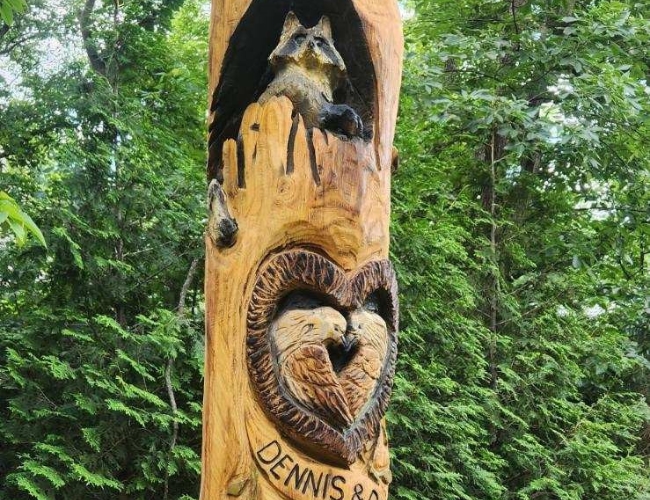
Want More Like This?
Get the latest local news, tree care tips, special offers, and company updates directly to your inbox! It's easy to subscribe and there's no spam - we promise.
"*" indicates required fields




